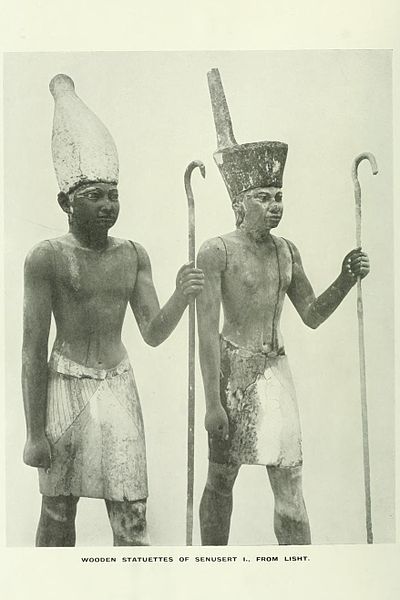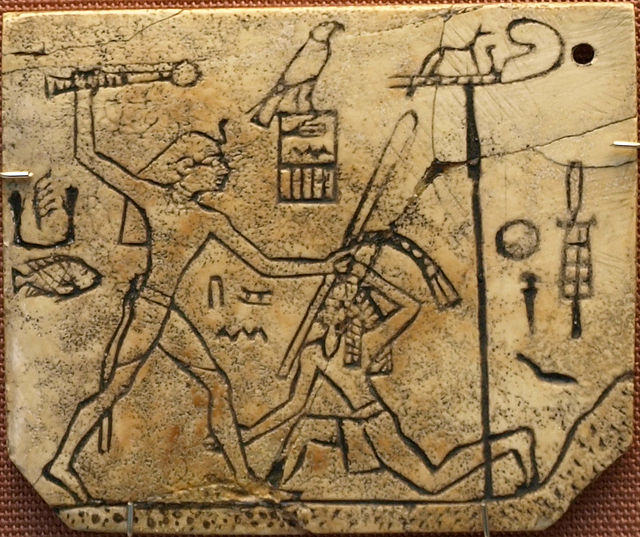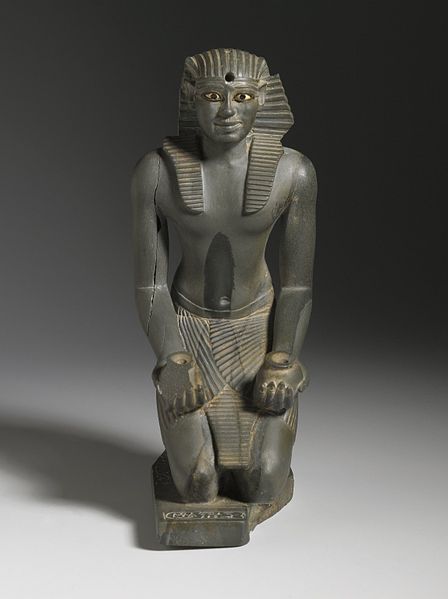Hedjet is the White Crown of pharaonic Upper Egypt. After the unification of Upper and Lower Egypt, it was combined with the Deshret, the Red Crown of Lower Egypt, to form the Pschent, the double crown of Egypt. The symbol sometimes used for the White Crown was the vulture goddess Nekhbet shown next to the head of the cobra goddess Wadjet, the uraeus on the Pschent.
Small bronze statuary usage with the hedjet, white crown
Bronze statuette of a Kushite king wearing the white crown of Upper Egypt; 25th Dynasty, 670 BCE, Neues Museum, Berlin
Painted relief of Mentuhotep II from his mortuary temple at Deir el-Bahri; 11th Dynasty, c. 2060–2009 BCE
A couple of statuettes which represent a Middle Kingdom pharaoh as King of Upper Egypt (left, with the white crown) and King of Lower Egypt (right, with the red crown); wood, from el-Lisht, 12th dynasty, Middle Kingdom (Egyptian Museum, main floor, room 22, JE44951)
Pharaoh is the vernacular term often used for the monarchs of ancient Egypt, who ruled from the First Dynasty until the annexation of Egypt by the Roman Republic in 30 BCE. However, regardless of gender, "king" was the term used most frequently by the ancient Egyptians for their monarchs through the middle of the Eighteenth Dynasty during the New Kingdom. The earliest confirmed instances of "pharaoh" used contemporaneously for a ruler were a letter to Akhenaten or an inscription possibly referring to Thutmose III.
The Mask of Tutankhamun from tomb KV62 in the Valley of the Kings. Pharaohs' tombs were provided with vast quantities of wealth
A guardian statue wearing the red crown which reflected the facial features of the reigning king, probably Amenemhat II or Senwosret II, and which functioned as a divine guardian for the imiut. Made of cedar wood and plaster c. 1919–1885 BCE
Uraeus depicted on king Den, ivory label found at his tomb in Abydos, c. 3000 BCE, British Museum, London
Statuette of Pepy I (c. 2338-2298 BCE) wearing a nemes headdress Brooklyn Museum, New York








